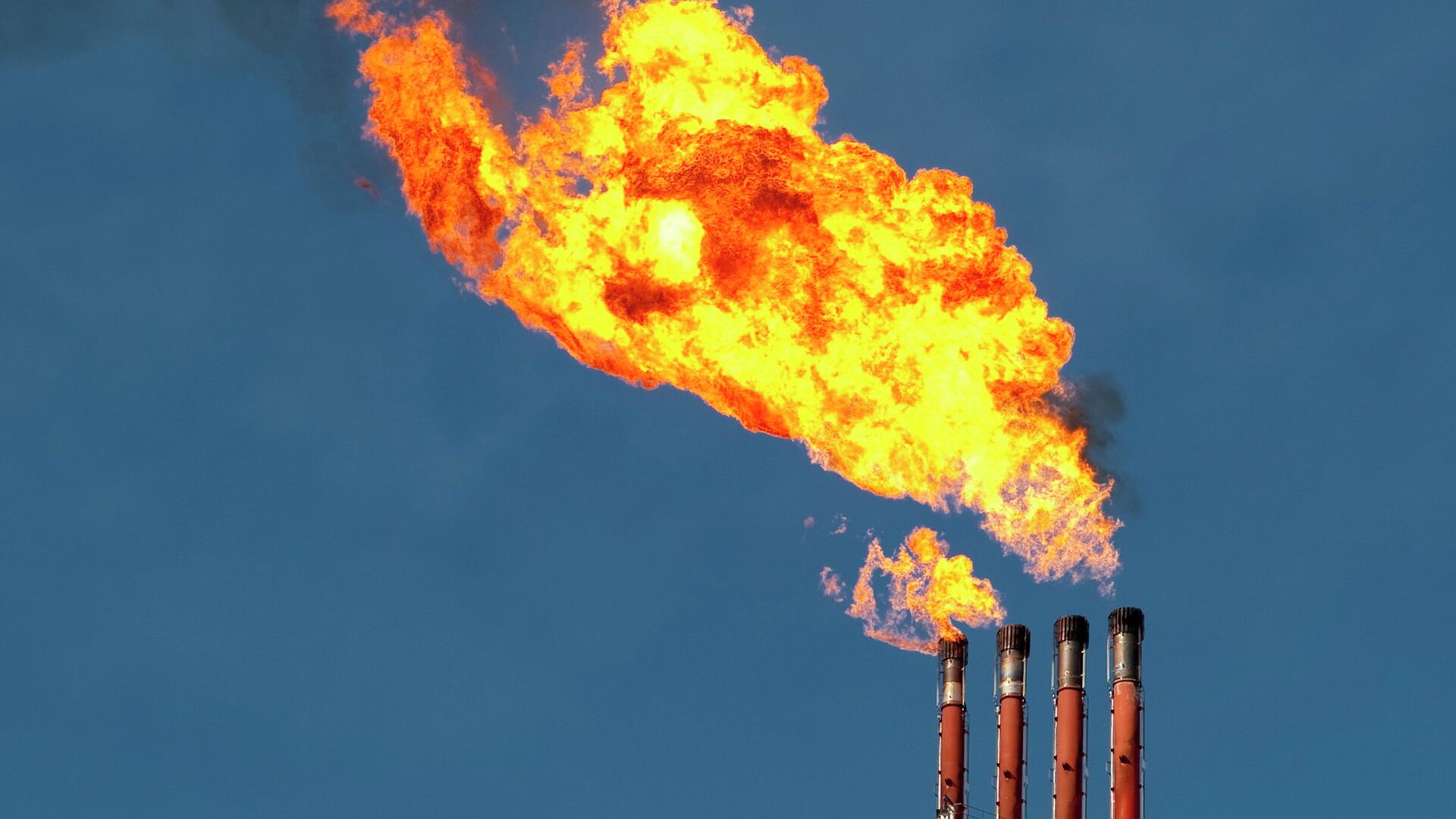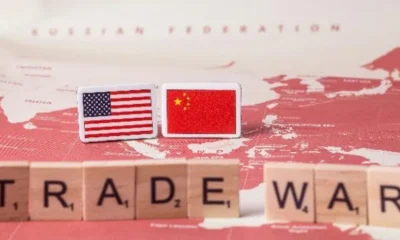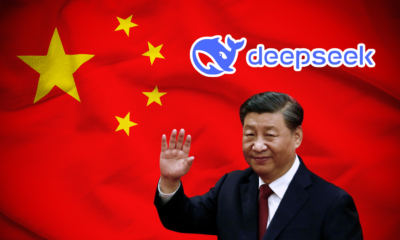Trends
Japan’s Shift From Russian LNG And Toward Cleaner Energy Transition Gives Way For Rival Supplies And Sakhalin’s Uncertain Future. Is The Future For Russian Gas Bleak?
Published
10 months agoon

As Japan’s long-term contracts for Russian LNG from Russia’s Sakhalin-2 project near expiration, the country stands at a critical juncture in its energy policy. Rival LNG producers are keen to fill the impending supply gap, and geopolitical dynamics alongside Japan’s energy transition goals are steering Tokyo towards a reduced reliance on Russian gas.
Japan, the world’s second-largest LNG importer, has historically relied on Russia for 9% of its LNG supply—amounting to 6 million metric tons annually, with 5 million metric tons sourced from long-term contracts with Sakhalin-2. Operated by Kremlin-controlled Gazprom, the project’s proximity to Japan has been a key advantage, with shipments arriving in just a few days, compared to over a week from Australia, Canada, or the United States.
However, geopolitical pressures and Japan’s pursuit of cleaner energy are reshaping its energy sector. The G7’s collective stance to reduce reliance on Russian energy, spurred by Moscow’s invasion of Ukraine, is influencing Japanese buyers to reconsider renewing Sakhalin-2 contracts. While the project is exempt from U.S. sanctions, its association with Russia has made it less favorable.
An official from Japan’s Ministry of Economy, Trade and Industry noted, “Maintaining the same level of supply from Russia may prove challenging due to the agreement among G7 members to reduce reliance on Russian energy.” The ultimate decision, however, rests with Japanese utility companies, which are key buyers of Sakhalin’s gas.
Energy Transition and Sluggish Demand
Japan’s energy strategy aims to cut LNG’s share of power generation from 33% in 2023 to 20% by 2030, while increasing renewable energy’s contribution from 26% to 38%. This shift aligns with Tokyo’s commitment to achieving carbon neutrality by 2050.
“There is a lot of renewable energy produced in our region, so the question of whether to renew the contract or not will depend on future renewable energy capacity,” said an executive from one of Sakhalin-2’s Japanese buyers. The combination of Japan’s sluggish power demand and renewable energy expansion indicates a reduced need for LNG in the long term.
Emerging Rival LNG Supplies
The expiration of Sakhalin-2 contracts opens the door for rival LNG suppliers, particularly from the United States, Canada, and Australia. Since 2022, Japanese buyers have increasingly turned to these allies to diversify their supply chains and reduce geopolitical risks.
The United States, for instance, has made significant efforts to pitch its LNG projects to Japan. U.S. Senator Dan Sullivan of Alaska has visited Japan multiple times to promote the Alaska LNG project, emphasizing its strategic importance for reducing reliance on Russian energy. Similarly, President-elect Donald Trump’s administration is set to approve new LNG export permits, bolstering the U.S.’s position in the global energy market.
Canada is also positioning itself as a major player. With the Shell-led LNG Canada project set to commence exports next year and two additional projects expected by 2027 and 2028, Canadian producers are in active discussions with Japanese firms to secure long-term agreements. Heather Exner-Pirot, a special adviser to the Business Council of Canada, highlighted Japan as a priority market, stating, “One of the top markets we are looking at is LNG.”
Australia’s Woodside Energy is similarly eager to capitalize on this opportunity. With strong ties to Japanese companies, Woodside is exploring ways to enhance LNG sales, including through its U.S. operations.

Uncertain Buyers and Supply
While rival LNG developers court Japan, questions abound over the future of Sakhalin-2 contracts. The project’s main gas field, Lunskoye, is nearing depletion, with stable production expected only until 2033, according to Russian news agency Interfax. Gazprom’s plans to develop the nearby Yuzhno-Kirinskoye offshore field face delays, partly due to U.S. sanctions imposed in 2015.
Japan has secured LNG supplies to meet demand through 2030, said Daisuke Harada, a research director at the state-owned Japan Organization for Metals and Energy Security (JOGMEC). However, the early 2030s could see an LNG shortage, making contract renewal decisions crucial.
Utility companies are weighing their options. JERA President Hisahide Okuda indicated no decision had been made regarding Sakhalin-2 contract renewals, but proximity to Japan remains an attraction. “If we can buy without the impact of sanctions, we will continue to source it for energy security,” a JERA source said.
Sakhalin-2 remains a cornerstone of Japan’s energy security, according to the Ministry of Economy, Trade and Industry. Yet, buyers also recognize the flexibility provided by Japan’s active LNG trading market, which handled 38.3 million tons in the last fiscal year—six times the volume purchased from Russia.
Christopher Doleman, an LNG specialist at the Institute for Energy Economics and Financial Analysis, observed, “Buyers can allow Sakhalin-2 contracts to expire without impairing Japan’s energy security.”
Despite this, utilities prioritize cost efficiency. Yumiko Yao, an executive with Tokyo Gas, noted that halting Russian LNG purchases would likely lead to higher prices. “If we, as a country, stop entirely buying from Russia, I think it is going to have a huge effect on our customers,” she said.

Future of Russian LNG Industry on the Rocks?
While Russian oil production has shown resilience despite Western sanctions following the invasion of Ukraine, the country’s gas and LNG sectors face significant challenges. These include limited pipeline infrastructure, reliance on Western companies, and difficulties in accessing long-term contracts.
Although Russian piped gas exports to China are expected to grow due to new infrastructure, the outlook for LNG appears bleak.
The Kremlin’s ambitious goal to commission 100 million tonnes of LNG capacity by 2030 is unlikely to materialize. Current forecasts predict a shortfall of 60 million tonnes, with production reaching just 36.3 million tonnes by 2026. Despite government support through tax breaks and incentives for research and development, sanctions have impeded progress, particularly in vessel acquisition and project financing.
Ambitious Targets, Grim Reality
In 2021, Russia’s Ministry of Energy projected LNG production to rise to as much as 140 million tonnes per annum (tpa) by 2035 under an optimistic scenario, or 80 million tpa in a conservative outlook. However, revised plans to boost LNG exports by 33% between 2022 and 2026—to 44 million tpa—are falling short, with the conservative case projecting only an 18% increase to 39 million tpa.
Despite the setbacks, some of Russia’s planned LNG projects are proceeding, underpinned by government backing. However, without a substantial change in global market conditions or sanctions relief, achieving the government’s targets may remain a pipe dream.
European Dependence and Global Buyers
Although European countries have largely cut off Russian piped gas, they still depend on Russia for a significant portion of their LNG supply. In the first quarter of 2024, LNG exports to Europe increased by 5% year-on-year. Replacing these volumes in the short term remains a daunting task for Europe.
Major buyers of Russian LNG include –
The European Union: The EU accounted for 49% of Russia’s LNG exports in October 2024. France, Spain, and Belgium are primary importers, with EU imports from Russia rising by 11% in the first half of 2024.
China: As the second-largest buyer, China purchased 22% of Russian LNG exports in October 2024.
Japan: Japan accounted for 18% of Russian LNG exports during the same period.
Other Buyers: Countries like Taiwan, South Korea, Indonesia, Thailand, Singapore, the Philippines, and India also import Russian LNG.
Austria and Slovakia: These nations continue to receive Russian gas via Ukraine.
Challenges Ahead for Russian LNG
Russia’s LNG industry faces the twin pressures of reduced demand from traditional buyers and logistical hurdles. The depletion of fields such as those feeding the Sakhalin-2 project adds another layer of complexity. Gazprom’s plans to develop new fields, like the Yuzhno-Kirinskoye offshore site, have been hampered by U.S. sanctions imposed in 2015.
Global shifts toward renewable energy further complicate Russia’s LNG ambitions. European countries and Japan are accelerating their transitions to cleaner energy, reducing their dependence on LNG. Meanwhile, rival producers in the U.S., Canada, and Australia are actively courting Russian LNG’s traditional markets, offering alternatives that align better with buyers’ energy security and environmental goals.
The Last Bit
Japan’s evolving energy strategy reflects a broader trend of balancing geopolitical considerations with economic and environmental goals. The transition away from Sakhalin-2 illustrates Tokyo’s commitment to diversifying its energy sources while adhering to its international obligations.
As rival LNG suppliers ramp up efforts to fill the gap, Japan’s buyers will have to figure out a complex matrix of pricing, reliability, and long-term sustainability. The outcome of these negotiations will not only redefine Japan’s energy portfolio but also influence global LNG trade.
Meanwhile, the future of Russia’s LNG industry is marked with uncertainty. While government support may keep some projects afloat, the combined impact of sanctions, depleting fields, and global market competition poses significant hurdles. For now, Russia’s ambitious LNG targets seem out of reach, and its role in the global LNG market may diminish over time.
You may like
-


Taiwan’s ‘Historic’ TSMC Deal, A Win Or The End Of Its ‘Silicon Shield’ As China Threatens? A Jittery Taiwan Watches Trump’s Moves On Ukraine, Wondering, Could We Be Next?
-


A Trade War That Just Won’t Quit. As Trump’s Tariffs Hit, China Stays The Course, For Xi’s Its Business As Usual Strategy
-


Indian Stock Market In Turmoil. Investors In Panic Mode, Is This A Temporary Correction Or The Start Of A Bear Market?
-


America And China’s Thirst For Gold In 2025 Is Draining Other Countries’ Reserves; Here’s Why?
-


Shakeup In The Auto Sector. Mercedes-Benz 15% Job Cuts, Nissan CEO Exit, And Germany’s Make-Or-Break Year
-


DeepSeek Ai Rush. China’s AI Contender Gears Up for Next Big Launch Even As It Gets Xi Jinping’s Blessings
